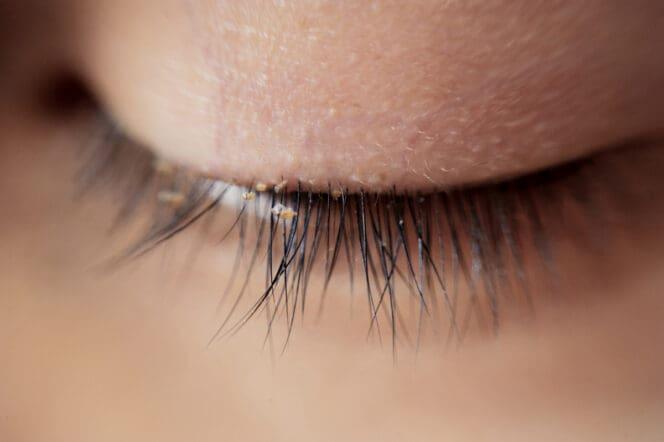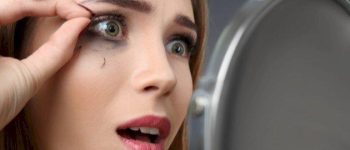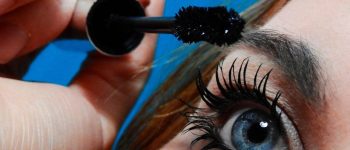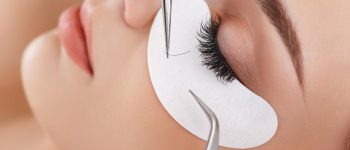Eyelash mites, these microscopic parasites, are no strangers to the human body. However, they tend to cause troubles in one specific area—our precious eyelashes. Let’s delve into the secrets of these unseen intruders and discover how they affect our eyes and what we can do to keep them at bay.

Demystifying Eyelash Mites
Did you know that eyelash mites naturally reside in our bodies? These invisible organisms take up residence at the base of our eyelashes. With their four pairs of legs, they firmly grip onto the hair follicles. Fear not, as long as their numbers remain in check, these creatures are usually harmless.
In fact, you may have eyelash mites in your eyes right now without even realizing it! They have a particular fondness for oily parts and feast on dead skin cells and waste. There are two main types of eyelash mites: Demodex folliculorum, which reside on the hair follicles, and Demodex brevis, which make their homes deeper inside the sebaceous glands or skin oil. These two types are exclusive to humans. However, a heavy infestation can lead to discomfort and even impair your vision if left untreated.
Signs and Symptoms
Each type of eyelash mite can cause different symptoms. Demodex folliculorum, which affects the front of the eye (anterior blepharitis), can lead to dryness, itchiness, blurry vision, sticky or crusty eyelashes upon waking up, rough skin around the eye, watery eyes, and swollen eyelids. In severe cases, conjunctivitis, a burning sensation inside the eye, abnormal eyelash growth, and eyelash loss may occur.
On the other hand, Demodex brevis, responsible for posterior blepharitis, blocks the Meibomian gland in the eyelid, resulting in a feeling of a foreign body presence. Some individuals may develop a swelling known as an eyelid cyst or chalazion.
Understanding the Causes
Our bodies are host to many microorganisms, including eyelash mites. In small quantities, these parasites are actually beneficial, helping to remove excess oil and clean dead skin. However, they are contagious and can be acquired through close contact with an infested person. Additionally, sharing eyelash brushes or face products with someone who has eyelash mites puts you at risk. These pesky critters can be spread to others in the form of adult mites or larvae. Dusty environments may also contain eggs that find their way to unsuspecting individuals.
Risk Factors
Certain factors increase the likelihood of acquiring eyelash mites. If you have oily skin, poor hygiene practices, regularly use makeup, or neglect to remove your makeup at night, you are at a higher risk. Pre-existing conditions like dermatitis, alopecia, inflammatory acne, and weak immune systems can also make you more susceptible to eyelash mites. Older adults and their caregivers are especially prone to having a higher number of eyelash mites.
Diagnosis and Treatment
If you suspect you have eyelash mites, consult your eye doctor. They will ask you about your symptoms and examine your eyes for any signs of swelling or redness. By shining a light beam on your eyelashes, they can detect a waxy substance at the base of the lashes, indicating a Demodex infestation. Alternatively, they may take samples of your eyelashes for microscopic examination.
Treatment for eyelash mites involves both medical intervention and home remedies. For milder cases, over-the-counter medicines or home remedies may suffice. Simple yet effective home remedies include cleansing your eyes with water and mild cleansers like baby shampoo, washing your eyes at least twice a day, gently scrubbing away crust, and using warm compresses to loosen debris from your eyelids.
For more severe infestations, it is advisable to seek medical treatment. Your doctor may recommend specific medications or cleansers, such as tea tree oil, Avenova, Blephadex, or Cliradex, to eradicate the mites. These treatments can provide quick relief by eliminating redness, inflammation, and other uncomfortable symptoms.
Prevention: A Prudent Approach
As the saying goes, prevention is better than cure. By maintaining good personal hygiene, you can significantly reduce the chances of eyelash mite infestations. Clean your lashes daily and gently wipe your eyelids during showering. Avoid sharing your makeup products with others and always remember to clean your makeup tools after use.
If you are already dealing with eyelash mites, wash your bedding in hot water to eliminate any lingering mites and their eggs.
Potential Complications
While eyelash mites are generally harmless in small quantities, heavy infestations may exacerbate existing conditions such as rosacea rashes, acne, and dermatitis patches. Additionally, severe infestations can lead to demodicosis, characterized by red, itchy, and sensitive skin with scales on the hair follicles. Fortunately, your doctor can prescribe specific creams or treatments to address these complications.
FAQs
Q: How do you know if you have eyelash mites?
A: Symptoms of eyelash mite infestation include dry eyes, blurry vision, sticky or crusty eyelashes, red and swollen eyelids, itchiness, a stinging sensation, and abnormal eyelash growth.
Q: How do I get rid of eyelash mites?
A: Home remedies and medical treatment can help eliminate eyelash mites. Regular eye cleaning and the application of ointments can be effective. For example, frequently wiping the eyelids with diluted tea tree oil can help remove these microscopic intruders.
Q: Does everyone have eyelash mites?
A: Almost everyone has eyelash mites, but they are harmless in small quantities. Babies acquire eyelash mites from their mothers, and their numbers tend to increase during the teenage years due to higher oil production. The likelihood of having mites increases with age.
References
-
Pathogenic Role of Demodex Mites in Blepharitis. (October 2010). Current Opinion in Allergy and Clinical Immunology.
-
Blepharitis. (August 2020). National Eye Institute.
To explore more fascinating topics, visit Ekilove for an enlightening experience!




